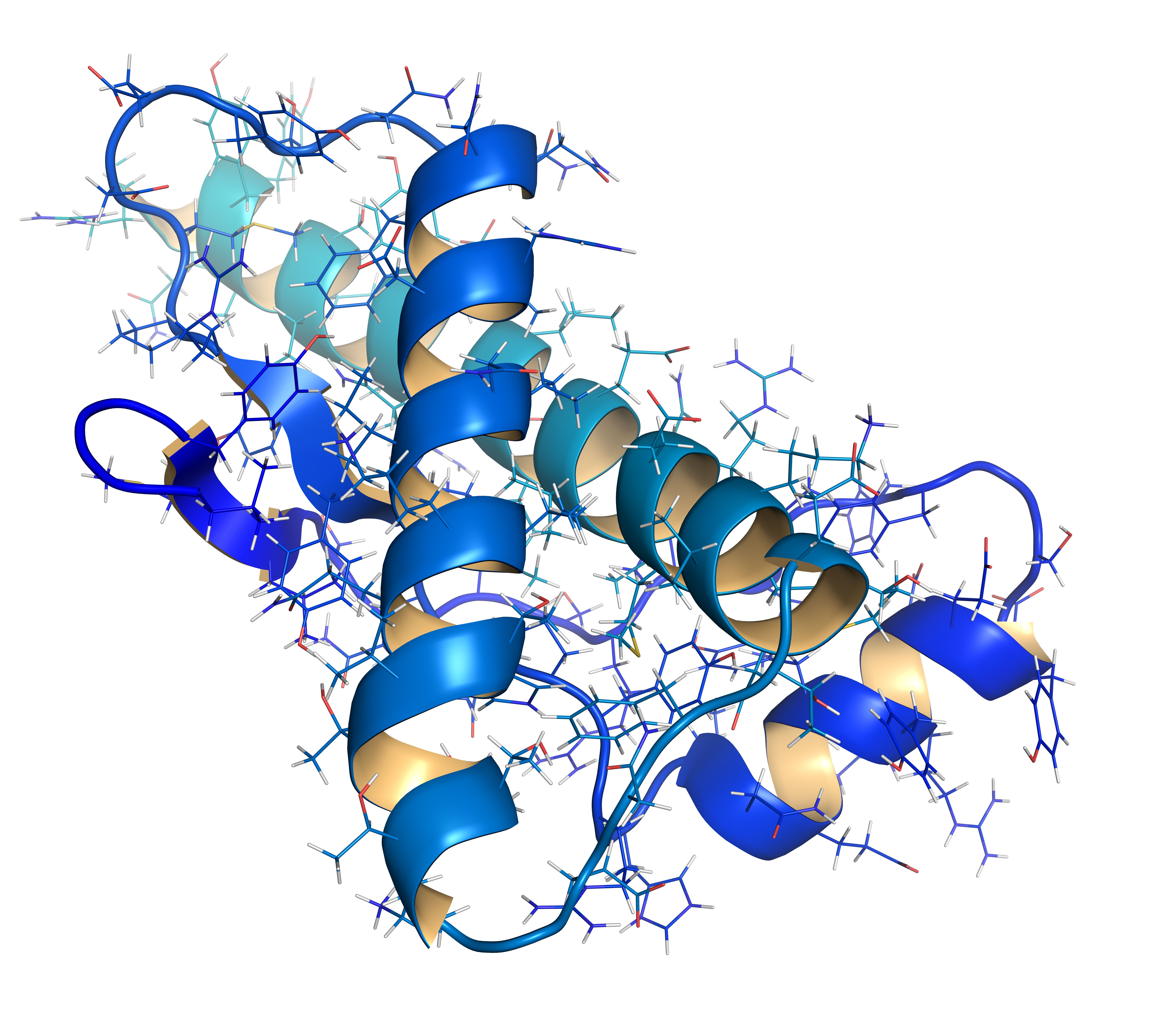Characterizing Non-covalent Protein Complexes Using Asymmetrical Flow Field-Flow Fractionation On-Line Coupled to Native Mass Spectrometry
A team of researchers have created an innovative analytical platform combining asymmetrical flow field-flow fractionation (AF4) with native mass spectrometry (nMS) to characterize non-covalent protein complexes, providing valuable insights into their stability and higher-order structures.
A team of researchers from the University of Amsterdam has developed a cutting-edge analytical platform that combines asymmetrical flow field-flow fractionation (AF4) with native mass spectrometry (nMS) to investigate labile higher-order structures (HOS) of protein biotherapeutics. Published in Analytical Chemistry, the study showcases the potential of this novel platform in elucidating the stability, HOS, and dissociation pathways of the tetrameric biotherapeutic enzyme L-asparaginase (ASNase), an anticancer agent (1).
Human prion protein (hPrP), chemical structure. | Image Credit: © molekuul.be - stock.adobe.com

HOS refer to the dynamic and reversible conformations formed by protein biotherapeutics. These structures are essential for the protein's function and stability but can also be susceptible to changes in environmental conditions. In the context of protein biotherapeutics, labile HOS encompass the complex arrangements of protein subunits, such as oligomers or aggregates, that can influence the therapeutic efficacy and safety of the biopharmaceuticals. By characterizing the labile HOS, researchers can gain insights into the aggregation patterns and dissociation pathways of protein biotherapeutics, aiding in the development and quality control of these therapeutic agents.
A research team led by Iro Konstantina Ventouri, Rob Haselberg, and Alina Astefanei established an online setup that integrates AF4 with nMS and employs ultraviolet (UV)-absorbance, multi-angle light scattering (MALS), and differential refractive index (dRI) detectors for comprehensive characterization. The "slot-outlet" technique was employed to minimize sample dilution and divide the AF4 effluent between the MS and UV–MALS–dRI detectors.
By subjecting ASNase to the developed platform, the researchers gained valuable insights into its non-covalent species and stability. While ASNase is known to exist as a 140 kDa homo-tetramer, the study revealed the presence of intact octamers and degradation products with lower molecular weights. Furthermore, exposure to 10 mM NaOH caused the dissociation of the higher-order structures of ASNase.
The correlation between the information obtained from AF4–MALS (liquid phase) and AF4–nMS (gas phase) analyses unveiled the formation of monomeric, tetrameric, and pentameric species, among others. High resolution MS investigations also detected deamidation of the primary intact tetramer when ASNase was exposed to high pH conditions such as NaOH and ammonium bicarbonate.
The developed platform proves its effectiveness in providing a wealth of information in a single run, making it highly valuable for studying protein biopharmaceuticals' aggregation and stability. By offering insights into the labile higher-order structures and dissociation pathways, this analytical tool has the potential to enhance the development and quality control of protein biotherapeutics, contributing to the advancement of therapeutic research and applications.
Reference
(1) Ventouri, I. K.; Chang, W.; Meier, F.; Drexel, R.; Somsen, G. W.; Schoenmakers, P. J. De Spiegeleer, B.; Haselberg, R.; Astefanei, A.; Characterizing Non-covalent Protein Complexes Using Asymmetrical Flow Field-Flow Fractionation On-Line Coupled to Native Mass Spectrometry. Anal. Chem. 2023, 95 (19), 7487-7494. DOI: https://doi.org/10.1021/acs.analchem.2c05049
New Method Explored for the Detection of CECs in Crops Irrigated with Contaminated Water
April 30th 2025This new study presents a validated QuEChERS–LC-MS/MS method for detecting eight persistent, mobile, and toxic substances in escarole, tomatoes, and tomato leaves irrigated with contaminated water.

.png&w=3840&q=75)

.png&w=3840&q=75)



.png&w=3840&q=75)



.png&w=3840&q=75)


